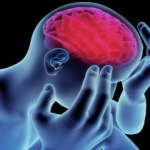Most people think that you must lose consciousness or get “knocked out” to have a concussion, but this is not the case. Any blow to the head or body that causes the brain to rock around in your skull leaving you a bit rattled is considered a concussion. There are, however, several degrees and levels of severity of concussions. All are serious though and should not be taken lightly.
What happens to the brain when you get a concussion?
300 D.P.I

A concussion is when the head or body is hit/jolted or has a blow to it causing the brain to shake which in turn causes the brain not to work normally.
The physical symptoms a person shows and feels can vary by severity of the impact or injury, the person, and history.
The most common physical symptoms are:
- Headaches
- Nausea
- Dizziness
- Sleep disturbances (difficulty sleeping)
- Difficulty concentrating or remembering
- Moodiness. (people with concussions are typically more emotional than usual)
Symptoms can appear right away, or may take several days after the initial injury. Getting your bell rung should not be taken lightly. Even if you think you had a mild blow to the head, it’s best to be checked out and cleared with a clean bill of health than risk permanent damage.
A concussion isn’t something that should be “shaken off” or “rub some dirt on it, you’ll be fine.”
By: Stephanie Jones
Sources:
http://orthoinfo.aaos.org/topic.cfm?topic=A00574

